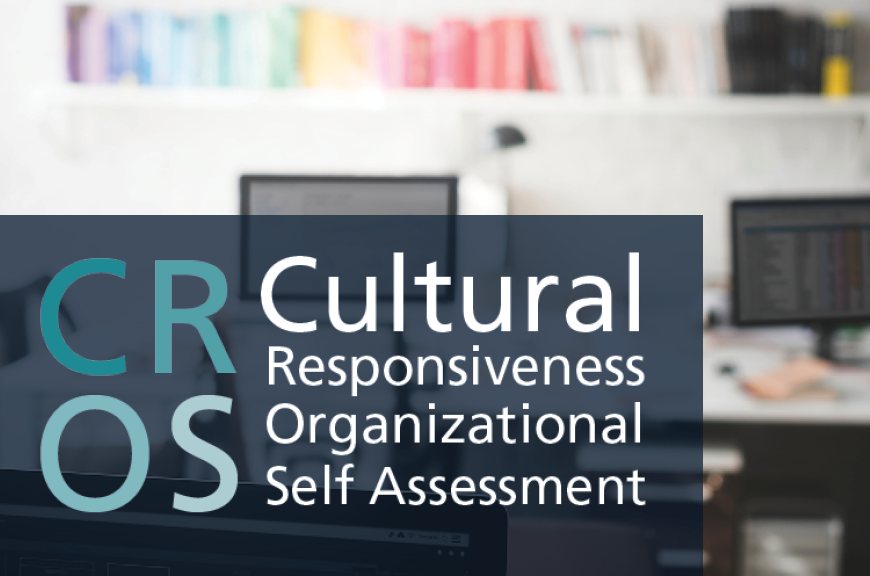Organizational Values Impact Effectiveness
Haven Women’s Center of Stanislaus Reflects on its Use of the CROS Tool
Last year, Haven Women’s Center of Stanislaus used the Partnership’s Cultural Responsiveness Organizational Self-Assessment (CROS) tool to address implicit bias and increase organizational equity. Are you ready to see where your team lands on the spectrum of cultural responsiveness? After reading about Haven’s experience, explore the CROS tool for yourself!
What was the challenge faced and what accounts for it?
Our main challenge was to address our lack of diversity within our staff (staff hiring and retention) and to shift client services to be more equitable. It’s nice to say we are client-centered and trauma informed, but there is much more we can do if we had a critical analysis of racial equity and shared language to name and address racial equity. We needed this permeate the agency and not just a few staff or a department or two.
There have been observations of our lack of training or knowledge on racial equity. Sometimes we treat clients differently because of our implicit biases. Sometimes we are not aware of the power dynamics between staff and client because we believe we are a just and nonjudgmental agency. However, following a philosophy or approach to client work is different from having a frame work of racial equity and being aware of the biases.
In Haven’s history, there have been a couple times when we have tried to have conversations on race and equity, it has not ended well.
What was tried in order to address the challenge? What surprises or obstacles were encountered along the way?
This attempt with the funding from CROS was to be intentional about exploring racial equity. A core group was trained on the language and knowledge around implicit bias, racism, and privilege so that we can train our staff to start our conversations and shift towards being a more racially equitable agency for staff and clients.
While working on building a shared language around racial equity, many in our work group learned to be comfortable with the uncomfortable to foster and cultivate growth and have needed conversations around implicit bias, and oppression & privilege. We had to work through our own feelings, but it is amazing that the outcome of it is a deeper understanding of how our identities and biases are interwoven into the services we provide for survivors. And in order to do justice in providing culturally responsive supportive services, we need to be aware of how an individual may receive services based on their identity and lived experiences and service providers’ implicit bias and privilege.
Describe the Turning point. What was the culmination of struggle, learning, insight and response that led to the new result?
There were many “ah-ha!” moments during our project (which is still on-going). Again, the distinction between safety and comfort was a great learning for many. When many understood that being uncomfortable is not the same as being safe and allowing oneself to sit with uncomfortableness in these conversations about oppression and race, the learning began.
For many communities of color, talking about domestic violence involves talking about culture, religion, race, or other components of a person’s identity. For example, it may be a foreign thing for many to try to tie in how anti-blackness impacts survivors in the Black community. Our work group learned that our history, our identities, our lived experiences shape how we view the world and how might we serve our clients (or not serve our clients). The bigger plan is to take our learning and share with the agency.
What was the result? What is different now and how is that impacting individuals, organizations, and/or communities?
We are slowly crawling through our CROS project with intention. Those in our workgroup have started to engage in conversations about racism, privilege, oppression, and cultural responsiveness in our personal lives, with our coworkers and colleagues, and in partnership spaces.
We do have a formal training planned, but these conversations we are having in informal spaces are what will keep our agency growing towards being racially equitable and culturally responsive. It won’t do us any good if we were to just have a one-time training on implicit bias, privilege, and racial equity and then believe that we’ve made a dent.
We were ambitious in coming up with an implicit bias training that we could cover in 2 hours. We learned that racial equity work takes time, it involves processing. So, our implicit bias training will now be stretched out to 3 2-hour sessions to give folks time to process, ask questions, and really learn.
What do you want people to do with the information in this story? What is an ask or an action that could follow its telling?
I want people to know that racial equity and cultural responsiveness work takes commitment and time from all levels within an agency. Don’t expect your agency culture to change overnight. Cultural responsiveness is a commitment and endless journey. Its life should not live within a grant period, but be part of an agency where it gets cultivated with the ever flow of cultural and societal changes and needs. I ask of those who are thinking or have already embarked on their cultural responsiveness and racial equity journey to make it a part of their job duty and job value. Be active and intentional about setting time to do this work because when we don’t, our clients who are at the margins will fall through.





